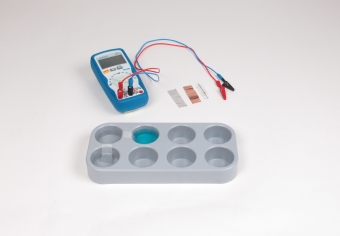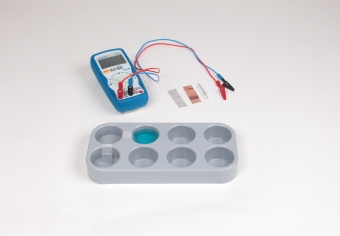Principle
It is well known that iron(III) ions can be reduced to iron(II) ions by suitable reducing agents. The driving force behind such an ionic reloading can be measured as the standard potential of an appropriately constructed galvanic cell. We therefore require for such a cell, in addition to a reference electrode (e.g. a standard hydrogen electrode or a silver/silver chloride electrode), an electrode which does not participate in the reaction between the iron ions, but only serves to conduct electrons, a so-called inert electrode. A platinum electrode or, as will be shown in this experiment, a carbon electrode can be used for this purpose.
Learning objectives
- How to measure potential of a redox-system
Benefits
- Easy teaching and efficient learning by using interactive experimentation PHYWE-Software
- Experiment is part of a complete solution set with experiments for the topic Electrochemistry matched with international curriculum: all topics are covered




